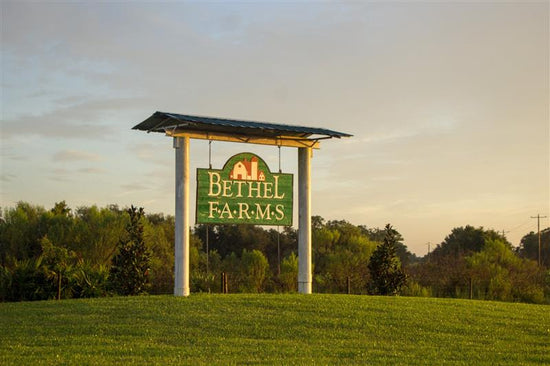
Bermuda vs. Zoysia: Which Grass Type is Better?
Jamie Tedder“It’s just grass.”
Not quite. Grass is a complex organism with various types, each offering unique textures, maintenance needs, and characteristics. A closer look reveals subtle differences in color and shape, all of which can affect the health and appearance of your lawn.
Choosing the right grass variety can mean the difference between a constant struggle and a consistently lush, green lawn that requires minimal maintenance. For first-time homeowners, understanding these grass types is crucial for selecting the best fit for your new lawn. For those with established lawns, it means learning how to keep the grass healthy and vibrant.

Bermuda and Zoysia: What's the Difference?
If you live in the southern U.S., with its warm temperatures and moderate winters, you’ll likely find yourself considering two of the most popular warm-season grasses: zoysia and bermudagrass.
Both varieties are well-adapted to the southern climate, characterized by long, hot, and humid summers, as well as mild, wet winters. They are drought-tolerant and can go dormant during extended dry spells. These grasses are usually recommended for sod installation, as they establish quickly, providing a uniform-looking lawn almost immediately.
Before we break down the similarities and differences between zoysia and bermudagrass, below is an overview of the two warm-season grasses.
Bermudagrass Overview
Bermudagrass is one of the most common warm-season grass varieties, widely used in golf courses and residential lawns. It features medium to coarse-textured, dark green pointed leaves and has a deep root system that allows it to spread and form a thick, dense lawn, effectively outcompeting weeds.
This grass is generally drought- and heat-tolerant and can thrive in various soil types. Improved varieties offer additional benefits, such as improved cold tolerance. For example, our proprietary Bimini Bermudagrass sod maintains its emerald green color longer in the fall, even as temperatures drop, while more common varieties go dormant. It also greens up earlier in the spring, resulting in a lawn that looks lush for a longer part of the year.
Zoysiagrass Overview
Zoysia grass shares many characteristics with bermudagrass, making it another excellent choice for warm climates. It is characterized by its exceptional heat and drought tolerance and resistance to heavy foot traffic, pests, and diseases.
This warm-season grass thrives in full sun but also performs well in partially shaded areas. Zoysia can withstand dry spells and typically goes dormant, turning brown when soil temperatures drop below 50°F. With its various cultivars, zoysia grasses offer a range of textures from fine to coarse.
READ: What is the Best Fertilizer for Zoysia Grass?

So, Which Grass Variety is Better for You?
Finding the ideal grass variety for your home involves considering several factors, including maintenance requirements, climate, location, personal preferences, and budget. By evaluating these elements, you can make an informed decision that improves the aesthetic appeal of your lawn while ensuring it thrives in your specific environment.
Appearance
Different cultivars of Zoysia and Bermudagrass offer various colors, blade widths, and textures. For example, Bimini Bermuda features a deep green color, fine-textured blades, and upright growth. In contrast, the hybrid Imperial Bermuda showcases a lighter green hue and smaller leaves, resulting in a finer, softer, dense turf.
Zoysia grass sod also features various cultivars with a spectrum of colors, such as the attractive blue-green color of Icon Zoysia.
Sunlight Requirements & Shade Tolerance
As warm-season grasses, both Zoysia and bermudagrass require at least six hours of full sun daily, although some cultivars may tolerate slightly less sunlight in shady areas. While bermudagrass has some shade tolerance, zoysia generally performs better in these conditions.
Mowing Heights
Each grass variety thrives at different mowing heights, which can vary throughout the seasons. Bermudagrass should be maintained at 0.5 to 1.5 inches, while zoysia typically thrives at heights between 0.5 and 2 inches. Finer-bladed zoysia varieties perform best at 0.5 to 1.5 inches, while wider-bladed cultivars flourish at 1 to 2 inches.
Understanding these height recommendations helps you gauge when to mow, as different grass types grow at varying rates and respond differently to growing conditions.
Durability
Bermudagrass is usually more wear-tolerant than zoysia, making it the preferred choice for golf courses. While zoysia can also be found in sports fields, it is often used for its aesthetic appeal, providing a textured landscape. Nevertheless, Zoysia has a high wear tolerance and is suitable for high-traffic areas such as lawns and parks.
Drought Tolerance
Drought tolerance refers to a grass's ability to survive with minimal water, while drought resistance is the capacity to thrive until water is needed. Bermudagrass and Zoysia require about 1 to 1.5 inches of water weekly for optimal health, significantly less than cool-season grasses. Generally, bermudagrass is more drought-adapted and performs better during prolonged dry spells than Zoysia.
Soil Quality
While both varieties can adapt to various soil types, Zoysia grass grows best in sandy or loamy soils and shows some tolerance to clay. In contrast, bermudagrass thrives in slightly acidic soils with a pH of 6 to 7 and prefers sandy conditions.
Maintenance Requirements
Zoysia and bermudagrass have different care requirements to suit various lawn preferences. Zoysia is known for its resilience against pests and diseases and its tolerance for cold temperatures, making it an excellent low-maintenance option.
Bermudagrass, with its vigorous growth and aggressive spreading habit, requires more frequent mowing to maintain its manicured appearance. However, this same quality enables it to recover quickly from wear and tear, making it suitable for lawns with regular heavy foot traffic.

Can You Mix Bermuda and Zoysiagrass?
While it may seem appealing to mix bermudagrass and Zoysiagrass to benefit from their unique features, such as drought and cold tolerance, it’s generally not recommended. The differences between these two grass varieties can lead to significant maintenance challenges. For example, bermudagrass is known for its vigorous growth and aggressive spreading habit, which can easily crowd out zoysia grass over time. This competition can undermine the aesthetic qualities of both grass types, leading to uneven patches and a less uniform lawn. Instead of creating a harmonious blend, mixing these two grasses often results in a lawn that requires more effort to maintain, making it difficult to achieve a uniform, healthy-looking landscape. For optimal results, it's best to choose one grass type that aligns with your specific climate and lawn care preferences.
Final Thoughts
Zoysia and Bermudagrass are equally excellent choices for cultivating a lush, green lawn. Zoysia appeals to homeowners with its ease of care and tolerance for challenging environmental conditions. Meanwhile, Bermudagrass stands out as a resilient option for sunny locations with consistent heat and high foot traffic, maintaining a beautiful lawn even under rougher conditions.
Ultimately, there’s no one-size-fits-all answer. Your choice between these two grass types depends on your specific situation and desire for a grass variety that thrives in your environment.
Zoysia and Bermuda Sod at Bethel Farms
As you embark on your journey to create a beautiful lawn, Bethel Farms is your trusted source for premium quality sod and sod plugs, including warm-season grasses like bermudagrass, zoysia, and St. Augustine.
Combining cutting-edge technology with years of expertise, we cater to your diverse lawn needs. Whether you’re establishing a new lawn with bermudagrass sod or repairing sparse areas with zoysia plugs, trust Bethel Farms for tailored solutions to enhance your outdoor space.
Which is better for your lawn, bermuda or zoysia grass? Let us know by leaving a comment.

